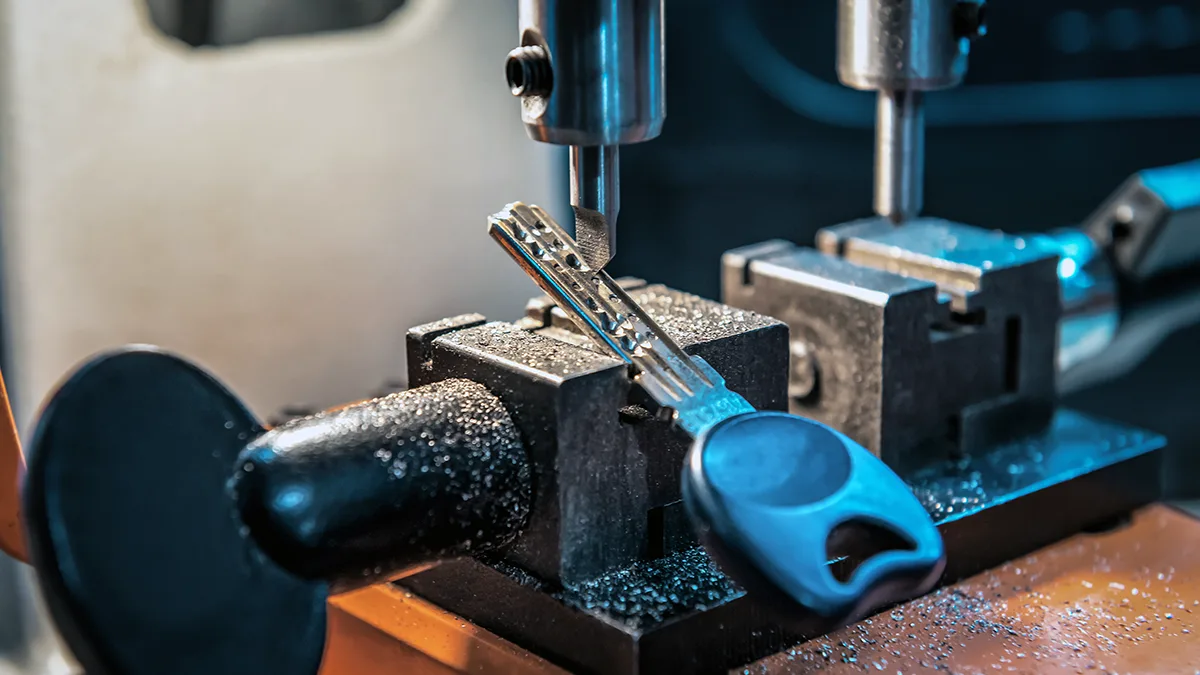Key Cutting in London: When You Need It and Where to Go Whether you've just…
Quick and Easy Door Repair: A Step-by-Step Guide for Homeowners
Quick and easy door repair: A step-by-step guide for homeowners. Regarding home improvement tasks, few are as satisfying and straightforward as tackling door repair projects on your own.
Whether you’ve noticed a creaky hinge, a stubborn lock, or a damaged door frame, knowing how to fix a door can save you time and money, transforming you into a DIY home repair expert.
Quick and Easy Door Repair
This guide will walk you through the essentials of door repair and door frame restoration, providing step-by-step instructions tailored for homeowners and renters alike.
You’ll learn how to quickly and effectively address common issues, ensuring your doors are in top condition without needing professional intervention.
With these tips, you can confidently maintain your property and enhance its value, all while gaining valuable skills in DIY home repair.
Assessing the Damage
Identifying Common Door Issues
To begin effective door repair, it’s crucial to identify the specific issues affecting your door.
Common problems include squeaky hinges, which often result from a lack of lubrication.
A door sticking in its frame may indicate swelling due to humidity or incorrect alignment.
If you’re dealing with a door that won’t close properly, check for misaligned latches or warped frames.
Cracks or dents in the door or frame might require more comprehensive door frame restoration.
For locks that are stiff or jammed, cleaning or replacing the lock mechanism is often necessary.
By correctly diagnosing these problems, you can determine whether a simple DIY home repair will suffice or if a more thorough approach is needed.
Understanding how to fix a door by recognising these common faults ensures you’re well-prepared to tackle the task and maintain your home improvement project efficiently.
Evaluating the Door Frame Condition
Assessing the condition of the door frame is an essential step in the door repair process.
Begin by examining the frame for visible signs of damage, such as cracks, rot, or warping.
These issues can compromise the structural integrity of the frame, necessitating repair or replacement.
Check for gaps between the door and frame, as these can result in drafts and energy inefficiency.
Use a spirit level to determine if the frame is perfectly aligned; misalignment could be the source of a sticking door.
Inspect the hinges and screws for any signs of wear or rust, which might affect the door’s functionality.
If the frame is severely damaged, a more extensive door frame restoration may be required.
By carefully evaluating these aspects, you can decide the appropriate course of action, ensuring the door and frame are in good condition and contributing positively to your home improvement efforts.
DIY Door Repair Techniques
Basic Tools and Materials Needed
Embarking on a DIY home repair project, such as door repair, requires having the right tools and materials at your disposal.
Essential tools include a screwdriver set for loosening and tightening screws, a hammer for minor adjustments, and a utility knife for precision cutting or trimming.
A tape measure is crucial for accurate measurements, while a spirit level helps ensure proper alignment.
Sandpaper or a sanding block can smooth any rough edges or surfaces.
For materials, you’ll likely need wood filler to address minor cracks or dents in the door or frame. Lubricant, such as WD-40, is vital for eliminating squeaky hinges.
If the door frame requires restoration, consider having wood glue and clamps on hand.
Keeping these tools and materials ready ensures you can efficiently tackle most door issues, making your DIY project both manageable and effective in improving your home’s functionality.
How to Fix a Door
Fixing a door can be straightforward with a methodical approach.
Begin by addressing any squeaky hinges, often resolved by applying a lubricant to reduce friction.
For doors that stick, check the alignment first; if misaligned, adjust the hinges or plane the edges as needed. In the case of a door that doesn’t latch properly, inspect the latch and strike plate.
Adjusting the plate or replacing the latch may be necessary for a secure fit. If the door shows signs of cracks or damage, apply wood filler to repair these areas, sanding smooth after drying.
For more significant door frame restoration, ensure any replacement pieces match the original materials in style and size.
Following these steps, you’ll be able to tackle most common door issues, enhancing your DIY home repair skills and maintaining your home’s functionality.
This proactive approach not only saves money but also extends the life of your doors.
Repair Door Frame Methods
Repairing a door frame can seem daunting, but with some basic techniques, you can achieve a professional finish.
Start by identifying any damaged sections of the frame. For minor cracks or splits, apply wood glue to the affected area, securing it with clamps until dry.
If there are larger holes or areas of rot, remove the damaged wood and replace it with a matching piece, securing it with nails or screws.
Sand the surface smooth to ensure an even finish. For aesthetic restoration, apply primer and paint to match the existing frame.
If misalignment is an issue, adjust the hinges or the frame itself, using a spirit level for accuracy.
These repair door frame methods not only restore functionality but also improve the appearance of your home.
By mastering these techniques, you enhance your DIY home repair repertoire, ensuring your doors operate smoothly and efficiently while contributing positively to your home improvement projects.
Professional Locksmith Services
Benefits of Hiring a Professional
While DIY home repair can be rewarding, there are times when hiring a professional locksmith is beneficial.
Professionals bring a wealth of experience and expertise, ensuring that any door repair or door frame restoration is completed to a high standard.
They have specialised tools and knowledge to address complex issues, such as advanced lock mechanisms or severely damaged frames, that might be beyond the scope of typical DIY efforts.
Additionally, hiring a professional can save you time and effort, allowing you to focus on other tasks while ensuring the work is done efficiently and effectively.
Professionals can also provide valuable advice on best practices for maintenance and security enhancements, tailored to your specific needs.
By choosing a reliable locksmith service, you gain peace of mind knowing that your home improvement projects are in capable hands, enhancing the safety and functionality of your property.
Choosing a Reliable Service Provider
Selecting a reliable locksmith service provider is crucial for ensuring quality and security in your home improvement projects.
Begin by researching local locksmiths with a strong reputation; customer reviews and testimonials can offer valuable insights into their reliability and expertise.
Ensure the provider is accredited by relevant trade associations, as this indicates a commitment to professional standards.
Transparency in pricing is essential—request detailed quotes to avoid hidden fees.
A reliable service provider should offer a range of services, from simple door repairs to complex security enhancements, demonstrating their versatility.
Additionally, check if they offer emergency services, which can be critical in urgent situations.
Communication is key; choose a locksmith who is responsive and willing to answer your queries comprehensively.
By taking these steps, you can confidently select a locksmith who will not only meet your needs but also provide peace of mind, knowing your property is in trustworthy hands.




Comments (0)